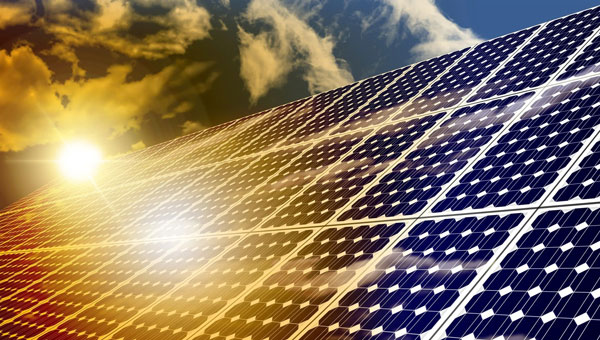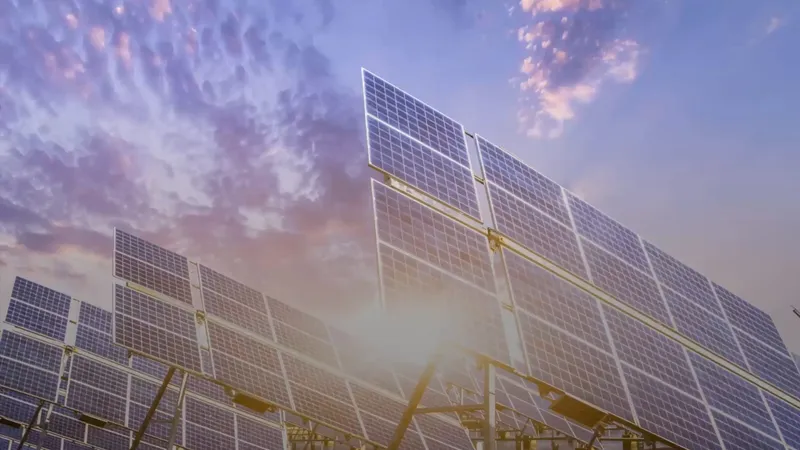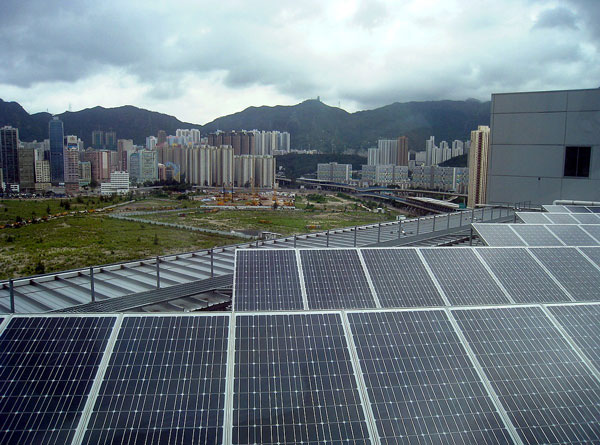Advancements In Silicon Wafer Technology
For a long time the building blocks of the technology of solar energy, silicon wafers have gone through some significant advancements in recent years improving the efficiency and the scope of their application. A key innovation here is the development of ultra-thin silicon wafers that are not only cost-effective but also cut the material use by around 50%. As a result, this opens up new opportunities for solar panel installation in non-traditional areas like skyscraper windows and the surface of electric vehicles.
Higher Sunlight-To-Power Efficiency
New developments have resulted in silicon-based solar cells with efficiencies over 26%. How did scientists make this leap by improving the light absorption and lowering electron recombination losses? The most notable is that it has been founded on the introduction of the passivated emitter rear contact (PERC) technology. This is evident in these high-efficiency panels used in large solar farms in Arizona as they put out higher power per square meter, greatly reducing land use and system costs.
Cost Reduction Strategies
Solar energy systems have seen costs fall largely due to improvements in production of silicon wafers. One such method is by cutting silicon blocks using diamond wire saws, which reduces the amount of material waste. Just this technique has assisted in approximately 15% of the reduction of the costs for the production. SunPower & other companies have done that effectively and can now bring much more competitive solar solutions into residential markets.
Improvements in Durability and Longevity
The other thing to consider is durability as it will determine the long-term reliability and the returns from the investment in the solar panels. Silicon carbide (SiC) introduced in the wafer production process have made solar cells that can be immune to the effects of tough environmental conditions and can continue to perform. In coastal regions with high levels of humidity and salt mist, these improved panels retain their efficiency for over a quarter century, a sign of the material's durability.
Smart Technology Support
The pairing of silicon wafer solar cells with IoT technology has reimaged the ways in which we manage energy in our smart home. Said solar panels are sensor-equipped, and can talk to home energy management systems, letting household devices decide when to turn on and off depending on real-time usage data. Home also applies for this technology as smart city project in california where homes started changing their energy consumption depending on the best time to use solarion, also I make it more efficient and cheap.

The Rise of Graphene in Solar Panel Efficiency
The entrance of graphene in the solar panel market marks a new chapter for photovoltaic technologies. This two-dimensional carbon is famous for its remarkable electrical, thermal and mechanical qualities. Recent advances have demonstrated the successful integration of graphene into the solar cell production process, helping to improve light absorption efficiency and to minimize energy losses.
Improving Light Absorption
Of particular note is that graphene was quite effective at absorbing light across a wide range of wavelengths, which means graphene could allow solar panels to be much more efficient (i.e. to generate electrical power from a larger proportion of sunlight). Studies have shown that a single layer of graphene added to current photovoltaic materials has the ability to increase the amount light absorbed by up to 25%, better than the average cells. Pilot projects in Spain are using panels made with graphenedeliver a 30% increase in energy production over their traditional counterparts.
Improved Conductivity and Less Rigidity
Graphene has an unique electronic quality among solids, by possessing the highest electrical conductance, which means that it has the lowest electrical resistance and least power is lost during energy transfer in the solar panel. This feature also makes flexible solar panels possible, which the power portable and wearable technologies make use of them. A prime application has been to include these flexible panels as part of smart clothing designs, where they take power from body motion and ambient light to fuel their devices.
Thermal Management
The thermal conductivity of graphene is also essential for the suitability of the material for use in solar panels. It has the capability to efficiently spread heat and this is why it did not suffer from the common problem of overheating faced by such high performing solar cells. In places like the Middle East, there is a great deal of sunlight, and graphene panels have been demonstrated to lose less of their efficiency due to heat, which makes this property useful.
Interfacing with current technologies
Its flexibility also allows it to work with current solar technologies. The efficiency of silicon-based solar cells can be improved with only minor changes to today's production lines, said Jia Luo, a research and development staff member at the IBM lab. This has made the technology fast to adopt and scale in markets like Germany and Japan, where solar makes a lot of sense from a national energy stratagy point of view.
Innovations in Organic Photovoltaic Materials
Organic photovoltaic (OPV) materials have been attracting much attention in the solar industry as a solar cell technology that will change the game because of their superior mechanical properties and low production costs. These materials are based on a carbon-based compound that absorbs light and converts it to electricity, much like in the process of photosynthesis in plants. These latest advances in OPV technology are not only bringing solar power to areas that have none, but are also opening up entirely new application possibilities.
Nanostructuring as A Tool to Enhance Efficiency
Recent progress in nanostructuring organic materials has produced dramatic increases in their photovoltaic performance. Nano-scale photonic crystals have been used to increase the absorption of light into organic cells, with a gain of around 20 percent in efficiency. Other undertakings in urban areas, such as New York City, have utilized these next-level materials in building-integrated photovoltaics (BIPV) to transform the face of whole structures into energy-producing systems.
Improvements in Stabilisation Material
An inherent disadvantage of traditional OPV materials has their short lifetime resulting from decomposition upon exposure to air and moisture. They have struggled of durability in the past, but newer versions with better polymer case techniques have come a long way to fix that. Tests on coastal sites in Florida demonstrated that the new materials were able to retain more than 90% of their efficiency after five years, a major improvement over their predecessors.
Use the application anywhere and at anytime, focus on the light weight and modular nature of the functionality.
Due to the inherent durability and low weight of organic photovoltaic materials, such devices have potential for use in a range of applications beyond traditional solar panels. These materials are being used to help fuel items like handheld chargers, mobile power, and even wear & tear. One such application is in creating solar tents for disaster relief, becoming a light-weight / mobile off-grid power that can be deployed immediately without the need for a consistent supply of fuel.
Quality
Organic photovoltaic materials have further matured in the production process, thus facilitating a certain degree of scale and cost reduction. For large-scale OPV cell production, you can now apply the same roll-to-roll printing processes used in newspapers. The system has been implemented in German industrial parks, reducing the assembly time and investment for solar panels, one of the ways to produce them, and reducing their cost, making it possible to meet future global demand.
Development of Thinner, More Flexible Solar Cells
The solar cell has opened up the potential for a myriad of new applications as well as revolutionised the solar industry with its thin and flexible design, which means you are no longer limited to clunky square solar panels on your roof. Powered by the demand for more adaptable solar technologies that can be seamlessly incorporated into ordinary things and structures, unhampered by the constraints imposed by traditional rigid panels.
Material and Fabrication Technologies
New materials and production processes, such as perovskite and organic photovoltaic compounds, have led to the development of thinner, more flexible solar cells-a major breakthrough. It can deposit light, durable, high- performance layers as thin as a single atom that convert sunlight directly to electricity. A team of scientists in California were able to create a solar cell smaller than a bubble that would not burst without this material being incredibly lightweight and flexible.
Incorporation in Consumer Goods
Integration into consumer products is one of the most attractive applications of flexible solar cells. These applications are already going from concept to reality-anywhere from solar-powered smart watches to e-reader covers that charge the device. A Swedish company has introduced bags with slim, pliable solar panels that allow users to charge their devices while on the move, combining mobility with neater energy applications.
Architectural Applications
This will create an aesthetically pleasing, solar facade and roof that provides the building self-shading to automatically reduce the heating and cooling loads making thinner and flexible solar. Not like standard solar panels, these flexible cells may be inserted into the surface of building materials and also offer a seamless design. One of the most prominent project taking place in Tokyo implant solar cells in the glass panels of a commercial building so there are no shades or coloration splitting up the design of the building which in turn make the whole building a generator of power, too.
Energy efficiency and storage progress continues
Nanotechnology and energy storage solutions are helping these flexible leafy solar cells achieve similar efficiency rates to traditional ones despite being thinner. The applicability of the cell is further enhanced by the innovative layering techniques that make these cells more absorbent to light, which in result doubles the output. New battery technologies are being made to store energy to better use them and to waste less of the power generated by such flexing cells.

The Impact of Nanotechnology on Solar Absorption
The role of nanotechnology in the improved efficiency, functionality and versatility of emerging solar modules. By tweaking the molecular and atomic properties of materials, scientists have created innovative solar cells that capture more sunlight and convert it to electricity more efficiently.
Nanostructured Solar Cells
The incorporation of nanostructures in solar cells like quantum dots and nanowires has augmented the cell's light absorption surface area drastically. Some, like quantum dots, can also be adjusted to absorb specific wavelengths of light and are much more efficient than traditional solar materials. Recent experiments have used quantum dots to make solar cells that perform with more than 33% energy conversion efficiency. We have a real-wold application of this technology in solar panels on the roof of those high-efficiency building in Singapore, which they are using to capture a wider range of solar radiation very effectively.
Enhancing Light Trapping
A weak area of solar panels for converting solar energy into electricity is light trapping, another field where nanotechnology plays a important role. These create a pattern of bubbles in the solar cell surface, trapping the light and increasing the amount of time it spends in the thin absorbing material. That pursuit has resulted in a quantifiable increase in energy capture: Some models are identifying as much as 40% more light absorption now. Nowhere has the utility of these cells been more profound than in areas such as Scandinavia with limited daylight hours in winter where maximising the amount of light capture is vital.
Reducing Reflectivity
Tremendous success has been achieved reducing the light reflectivity off of the solar cells through the use of nanotechnology. The cells retain more incoming solar energy by using nano-engineered anti-reflective coatings that work on different wavebands of light at different angles. In Germany, large solar farms use the anti-reflective nano-coated panels to maintain their efficiency even during low solar incidence times, as early morning or late afternoon.
By this, I mean when they are integrated with construction materials.
The unique feature of nanotechnology is flexibility, it is possible to directly add photovoltaic materials to building materials window glasses and exterior tiles. Using the nanostructuring methods previously developed in order to make materials transparent or semi-transparent solar absorbers that enable buildings to create their own energy. Such nano-enhanced photovoltaic windows, like that of the new office complex in San Francisco not only generate power but they also reduce a significant portion of cooling costs by reducing infrared transmission.





